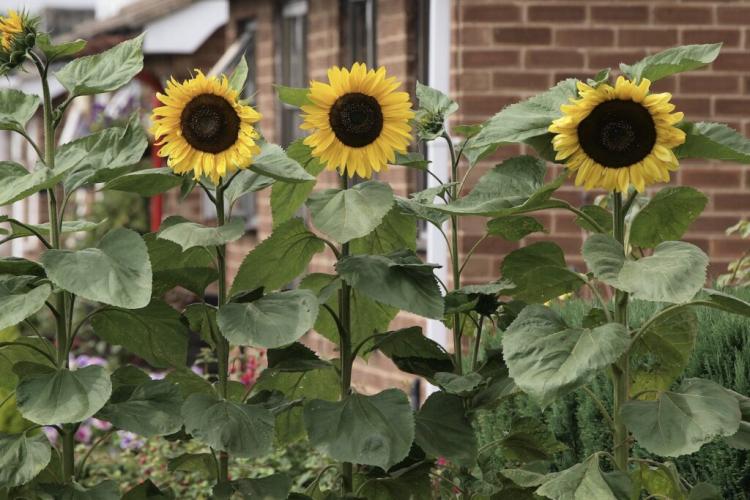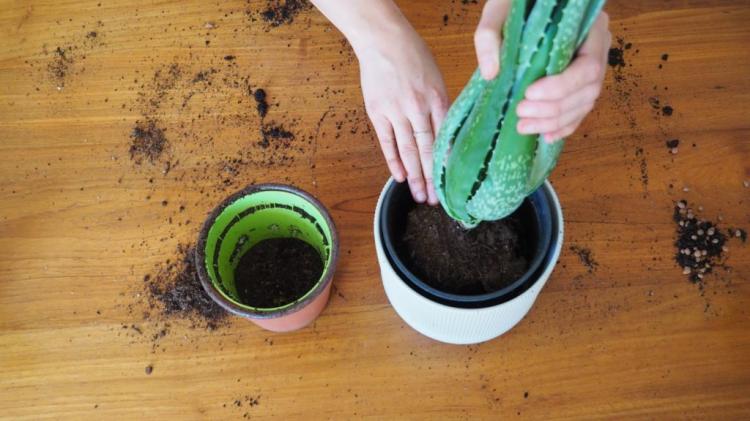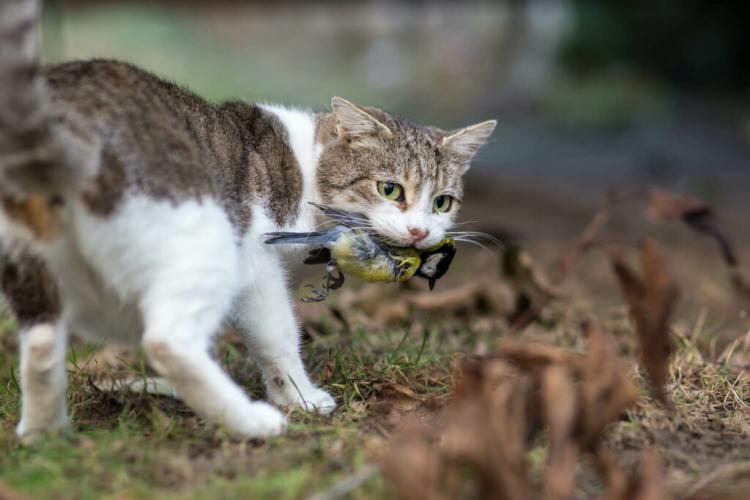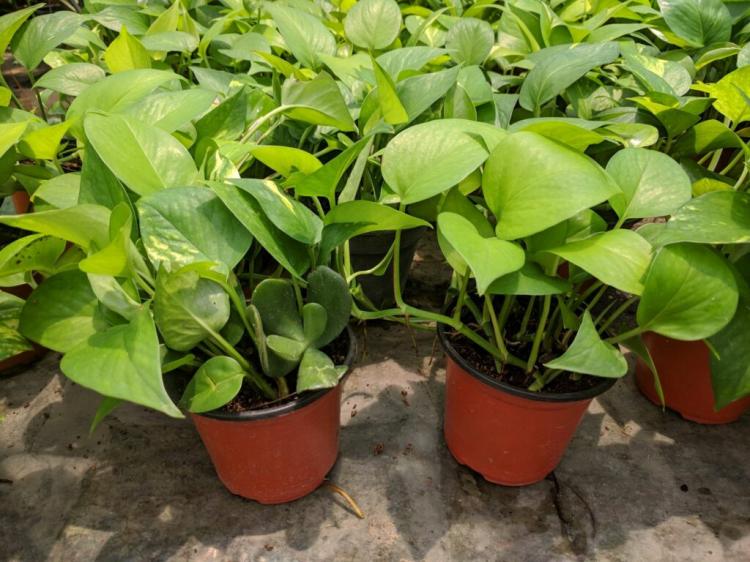Fighting garden beetles: nematodes, traps & Co.
Garden beetles can become unwanted residents of your garden. We will show you how to correctly identify and control the garden leaf beetle.
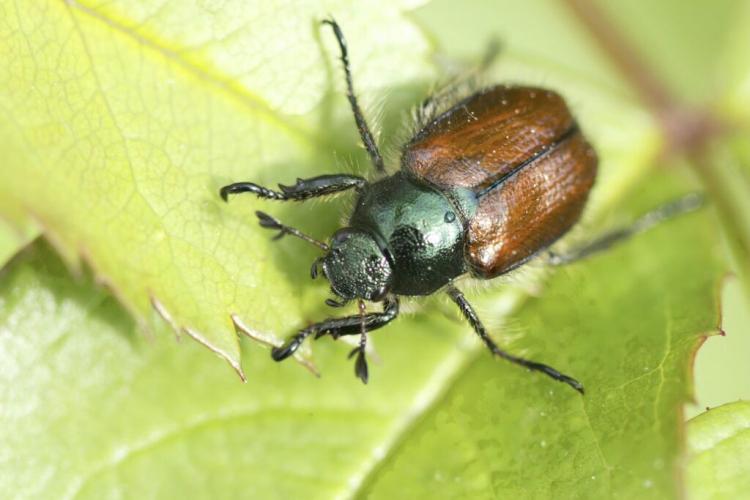
If the garden beetle reproduces on a massive scale, damage can occur [Photo: Galina Savina / Shutterstock.com]
While beetle larvae are considered a delicacy in Vietnam, they are known as pests in many places in Germany. This also applies to the larvae of the garden leaf beetle, which, like cockchafer and juniper beetle, belongs to the scarab beetles (Scarabaeoidea). Among other things, they feed on turf roots and leave behind a patchy lawn from July to September, which often causes annoyance in sports facilities, parks and home gardens. Garden beetle traps and other biological agents can be used to prevent damage.
Recognize garden leaf beetles
Table of Contents
The garden leaf beetle (Phyllopertha horticola ) comes from the scarab beetle family. The larvae of all scarab beetles are called grubs. In order to be able to distinguish it from its relatives, such as cockchafer, June beetle or Japanese beetle, it must be recognized correctly.
You can recognize the garden beetle by these features:
- Size: 8 to 11 mm
- Body: Thickly hairy
- Grand piano cover: light brown
- Pronotum: Metallic green
- Feeler: Short, ending in three lamellas
In order to avoid confusion with the now rare cockchafer, the June beetle and the Japanese beetle, you should first pay attention to the size of the beetle. The garden beetle is a lot smaller than its confused partner. Cockchafer beetles are around 20 to 30 millimeters long, while June and Japanese beetles are 15 to 18 millimeters long. In contrast to the garden beetle, the cockchafer's body is not hairy and the antennae end in six instead of two lamellae. The Japanese beetle also has a green pronotum, but differs from the garden beetle by the white tufts of hair on the side of the body. Further information on the detection, prevention and control of the June beetle can be found in this special article.
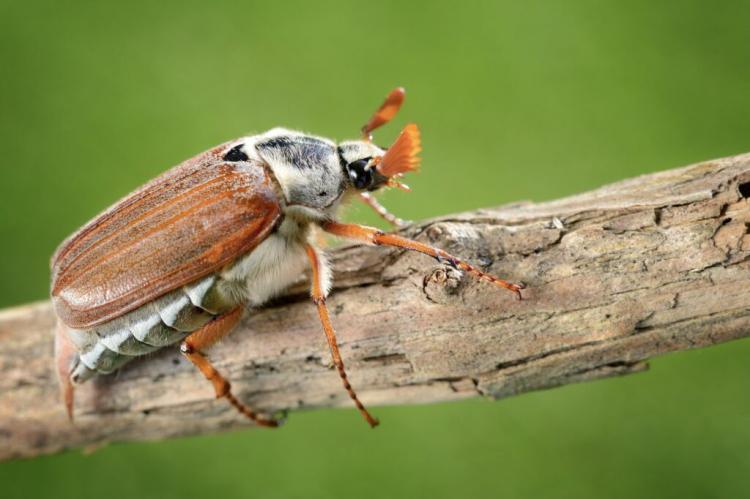
The cockchafer's antennae end in three lamellas [Photo: Alex Stemmer / Shutterstock.com]
Does the garden leaf beetle have to be controlled?
Fighting the garden beetle makes sense in exceptional cases. Garden beetles eat leaves of oak, birch, hazel, cherry and rose leaves hardly any damage. Only the larvae of the garden beetle, the grubs, can damage a green lawn in individual cases. This is particularly annoying in sports facilities and on golf courses. The larvae of the garden beetle feed on lawn roots, among other things, so that the lawn wither away nests. Secondary damage caused by birds pawing at the white grubs is also disadvantageous for sporting activities. Garden beetle traps can be used to prevent this damage – they provide information about how many beetles fly to mate. Three weeks after the mating flight, the grubs hatch, which from mid-July migrate upwards in the ground and begin to feed on the plant roots. It makes sense to control the white grubs from 100 larvae per square meter. Nematodes can be used to biologically control the blue larvae of the garden beetle.
Tip: To find out how many larvae live in your lawn, you can simply cut out a piece of lawn from mid-July and count: If you find 50 larvae in half a square meter or 25 larvae in a quarter of a square meter, you should choose one of the control methods presented below .
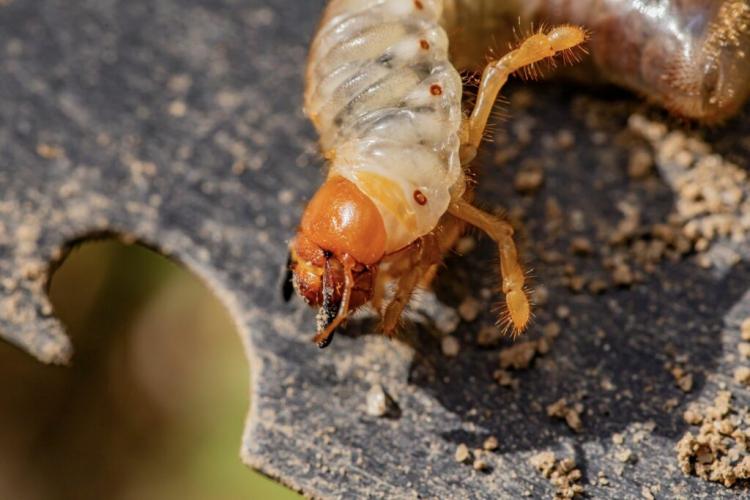
The blue larvae of the garden beetle can be recognized by their whitish color with a light brown head [Photo: Feyyaz Alacam / Shutterstock.com]
Control garden leaf beetle grubs with nematodes
Nematodes are tiny organisms also known as roundworms or small elders. Some genera of these roundworms parasitize beetle larvae such as white grubs or the larvae of the black weevil. They have a host-specific effect, so that they do not pose a risk to warm-blooded animals, people and plants. Using nematodes is simple and effective when used properly.
Which nematodes can be used against garden leaf beetles?
The nematode species Heterorhabditis bacteriophora , to which our Plantura HB nematodes also belong, penetrates specifically into the body orifices of the garden leaf beetle butterfly and secretes a bacterium that kills the butterfly within two to three days. After infection, the nematodes multiply against the grubs. When the grub is eaten, the nematodes leave their host in search of a new source of food.
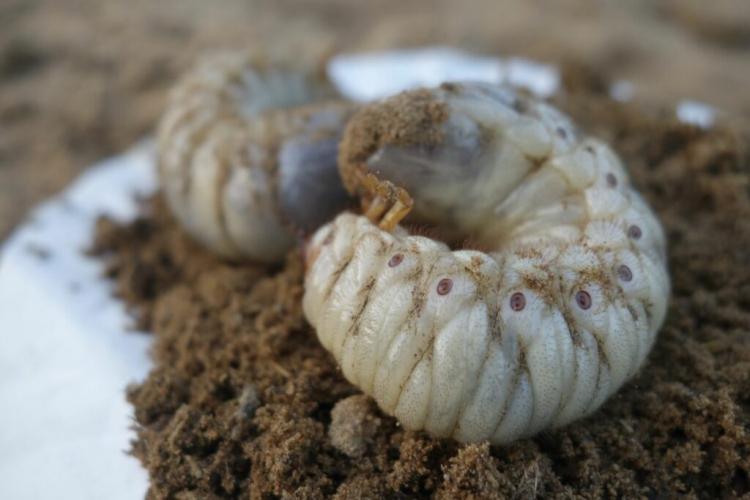
White grubs have orifices through which the nematodes can enter [Photo: Azay photography / Shutterstock.com]
Roundworms against garden beetles: timing
The garden beetle flight takes place between mid-July and the end of September. About six weeks later, the roundworms are used against the grubs. The floor temperature should be at least 12 ° C. As long as the nematodes find food sources, they survive and multiply. They die in drought, which is why the soil should always be kept moist.
Tip: Since nematodes can only be stored for a limited time, they should only be ordered shortly before use and used quickly. After receipt, our Plantura HB nematodes can be stored unopened in the refrigerator for about six weeks.
Spreading nematodes against garden beetles
The application of the nematodes against the blue larvae of the garden beetle is quite straightforward, but some important factors should be taken into account. Since the roundworms are sensitive to UV radiation, application in the evening hours or when the sky is overcast is advisable. To do this, a stock suspension is first made by adding the powdered nematodes to a little water and stirring them according to the instructions provided. Partial amounts of this stock suspension are stirred into the water and distributed – this results in several watering cans full of nematode suspension. In the case of very small areas and quantities, there is no need to prepare a stock suspension. Either a conventional watering can or a nematode sprayer can be used for application. The nematode suspension should be applied completely. Overdosing does not have any detrimental effect.
The remaining nematodes, which are attached to blades of grass, can then be washed into the ground with two to five liters of water per square meter. In dry weather this should be done within 30 minutes, as nematodes do not survive drought. In the following six weeks it is also important to keep the soil moist at all times.
Summary: Use nematodes against garden leaf beetles
- Select the right time for the application of the nematodes: July to September, soil temperature at least 12 ° C.
- Mix the nematodes with water according to the instructions and dilute further if necessary.
- Spread the nematode suspension in the evening.
- Keep soil moist for the next six weeks.

Nematodes are microscopic and cannot be seen with the naked eye [Photo: D. Kucharski K. Kucharska / Shutterstock.com]
Use garden beetle traps
Garden beetle traps are used to monitor the adult garden beetle population. They are equipped with attractants that are distributed with the help of the wind. Male and female garden beetles fly against a yellow deflector and fall into a funnel. From mid-May, the traps can be set up or hung outdoors. The attractant has a range of 100 square meters and can be renewed separately every year.
Important: If the funnel is filled within a very short time, nematodes should definitely be spread this year in order to reduce the spread of the garden beetle. Garden beetle traps are not effective control methods, but only serve to monitor the flight of beetles.
Infestation Prevention: Expert Tips
Make sure there is a dense lawn and good irrigation, because female garden beetles prefer sandy soils and dry lawns for laying eggs. You can find out how to properly care for your lawn all year round in our special article. During the flight of beetles in May, the lawn should be mowed a little higher, this reduces the occurrence of larvae by 40 to 70%. Those who love plants can replace lawns with vegetable or flower beds. When creating a new garden, care can also be taken not to plant too many garden beetle host plants – especially if the garden beetle occurs frequently in your own region anyway.
The host plants of the garden beetle include:
- Birch trees
- Hazelnuts
- Apple trees
- Poplars
- Pear trees
- Oak trees
- Roses
- Pastures
- Mountain ash
By the way, moles and birds are natural opponents in your own garden. As a preventive measure, you can also manually collect adult garden beetles from flowers and leaves or set up garden beetle traps.
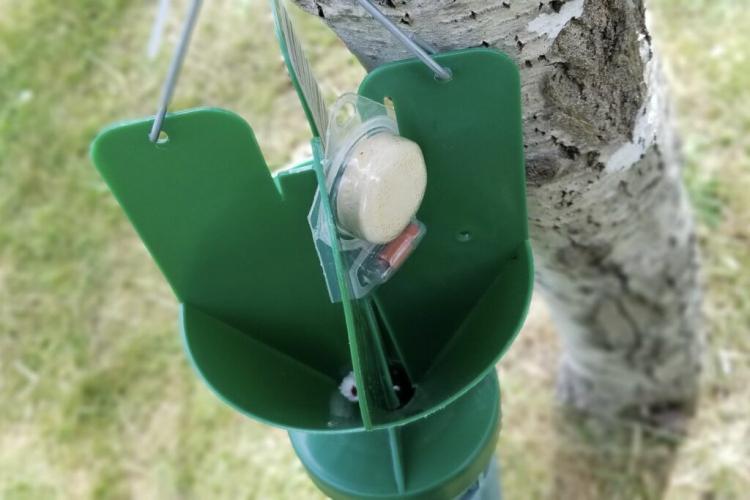
Traps like these help you see how many bugs are in the area [Photo: KarimaSK / Shutterstock.com]
Conclusion: In exceptional cases, garden leaf beetles can damage the lawn. To prevent a strong infestation, garden beetle traps can be set up and a dense lawn scar can be promoted. However, if biological control of the garden beetle is necessary, nematodes can be used. If you would like to identify even more whelks of beetles yourself, our additional article will help you.

